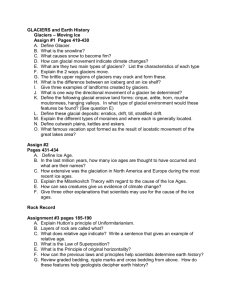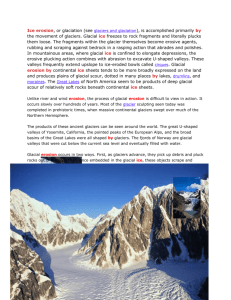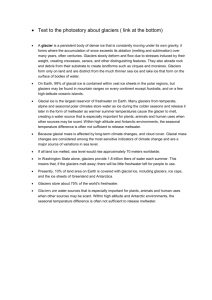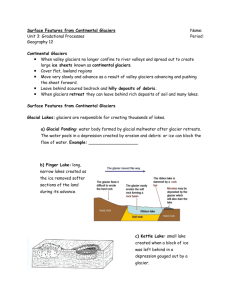Glacier Multimedia Presentations Worksheet
advertisement
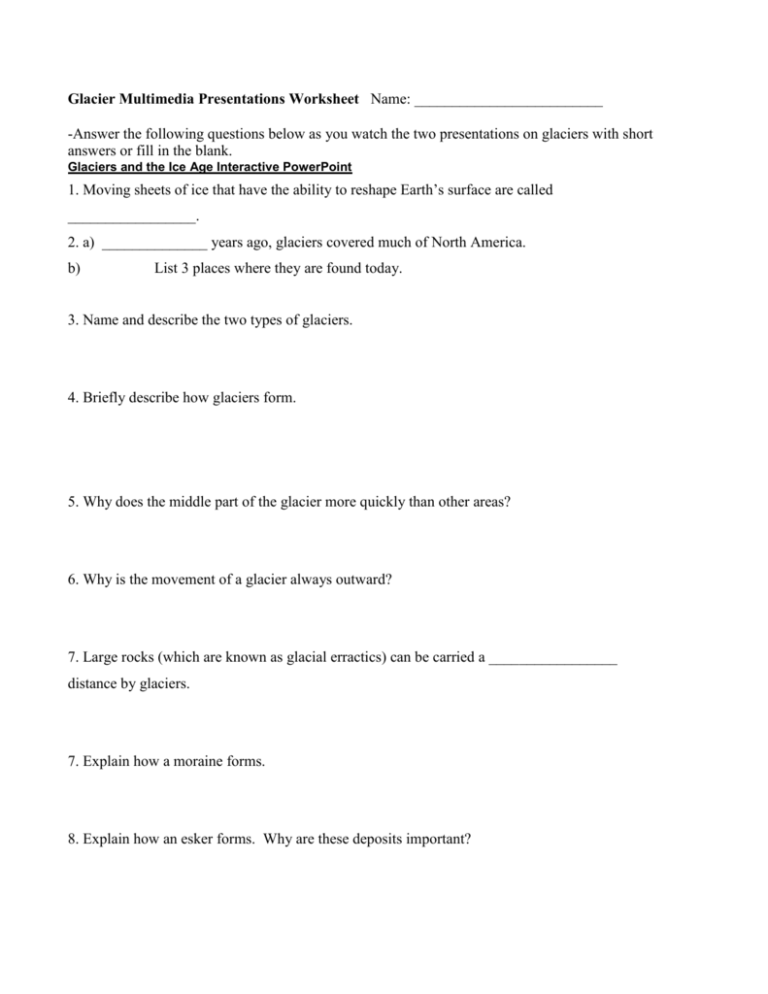
Glacier Multimedia Presentations Worksheet Name: _________________________ -Answer the following questions below as you watch the two presentations on glaciers with short answers or fill in the blank. Glaciers and the Ice Age Interactive PowerPoint 1. Moving sheets of ice that have the ability to reshape Earth’s surface are called _________________. 2. a) ______________ years ago, glaciers covered much of North America. b) List 3 places where they are found today. 3. Name and describe the two types of glaciers. 4. Briefly describe how glaciers form. 5. Why does the middle part of the glacier more quickly than other areas? 6. Why is the movement of a glacier always outward? 7. Large rocks (which are known as glacial erractics) can be carried a _________________ distance by glaciers. 7. Explain how a moraine forms. 8. Explain how an esker forms. Why are these deposits important? 9. What three things must come together to make an Ice Age occur? Give a fact for each. 10. What was the greatest thickness of the glacial ice sheets in North America during the last Ice Age? 11. Unsorted material laid down by glaciers as they melted is called ______________________. 12. Meltwater from glaciers that carried lots of soil and rocks and were deposited when rivers slowed down are known as __________________________________. 13. Fine sediment laid down around river valleys by melting glaciers, which later dry up and was eroded and deposited by wind is known as _________________. Annenberg Earth Science Video #23: Glaciers 14. The intermediate stage between snow and ice as a glacier forms is called _______________. 15. If ice is stressed gradually by gravity it will move in a bending motion that is known as plastic ________________________. formation, deformation, inflammation, or delineation 16. Louis ______________ is credited for early study of glaciers. Weiss, Lyell, Agassiz, or Tau 17. Ice sheets are domed and move in __________ directions, while valley (alpine) glaciers move in a _______________________________ direction. 18. Glacial ice is embedded with soil and rock and can scour the land as it erodes its surface, which can polish rocks and leave scratches on them called ________________________. 19. Glaciated stream valleys are _____ shaped and unglaciated stream valleys are ____ shaped. 20. _________________ (like the end, lateral, and medial types) can be used to trace past glacial movements because they represent landforms constructed glacial ice bulldozing the land and then retreating. 21. _________________ can be used from drill cores taken from ocean sediments to show how climate changed over time. 22. A lake filled basin formed by melting trapped ice in glacial till is known as a ___________________. Fun Fact: This is how Higgins Lake formed.


